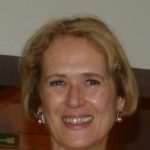Link to Pubmed [PMID] – 15361937
PLoS Biol 2004 Sep; 2(9): E273
Integration of mitochondrial DNA fragments into nuclear chromosomes (giving rise to nuclear DNA sequences of mitochondrial origin, or NUMTs) is an ongoing process that shapes nuclear genomes. In yeast this process depends on double-strand-break repair. Since NUMTs lack amplification and specific integration mechanisms, they represent the prototype of exogenous insertions in the nucleus. From sequence analysis of the genome of Homo sapiens, followed by sampling humans from different ethnic backgrounds, and chimpanzees, we have identified 27 NUMTs that are specific to humans and must have colonized human chromosomes in the last 4-6 million years. Thus, we measured the fixation rate of NUMTs in the human genome. Six such NUMTs show insertion polymorphism and provide a useful set of DNA markers for human population genetics. We also found that during recent human evolution, Chromosomes 18 and Y have been more susceptible to colonization by NUMTs. Surprisingly, 23 out of 27 human-specific NUMTs are inserted in known or predicted genes, mainly in introns. Some individuals carry a NUMT insertion in a tumor-suppressor gene and in a putative angiogenesis inhibitor. Therefore in humans, but not in yeast, NUMT integrations preferentially target coding or regulatory sequences. This is indeed the case for novel insertions associated with human diseases and those driven by environmental insults. We thus propose a mutagenic phenomenon that may be responsible for a variety of genetic diseases in humans and suggest that genetic or environmental factors that increase the frequency of chromosome breaks provide the impetus for the continued colonization of the human genome by mitochondrial DNA.

